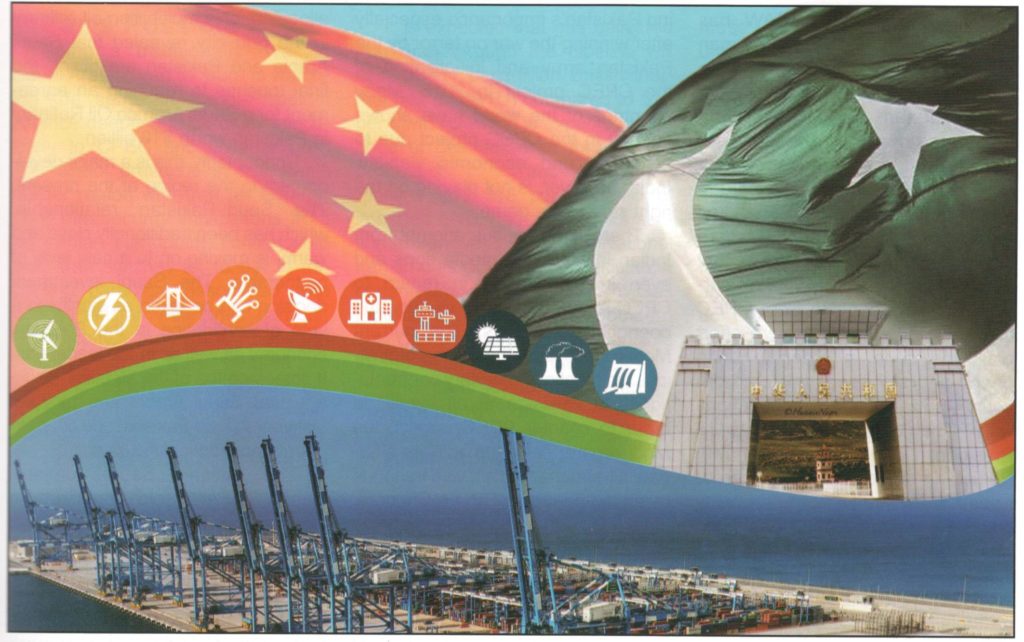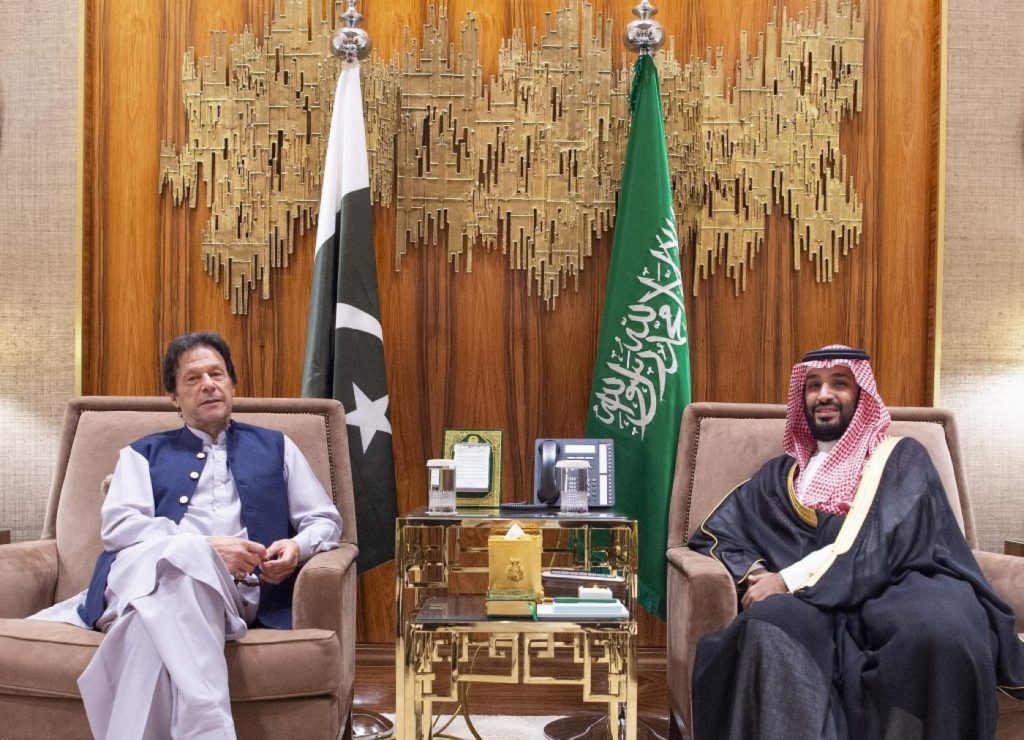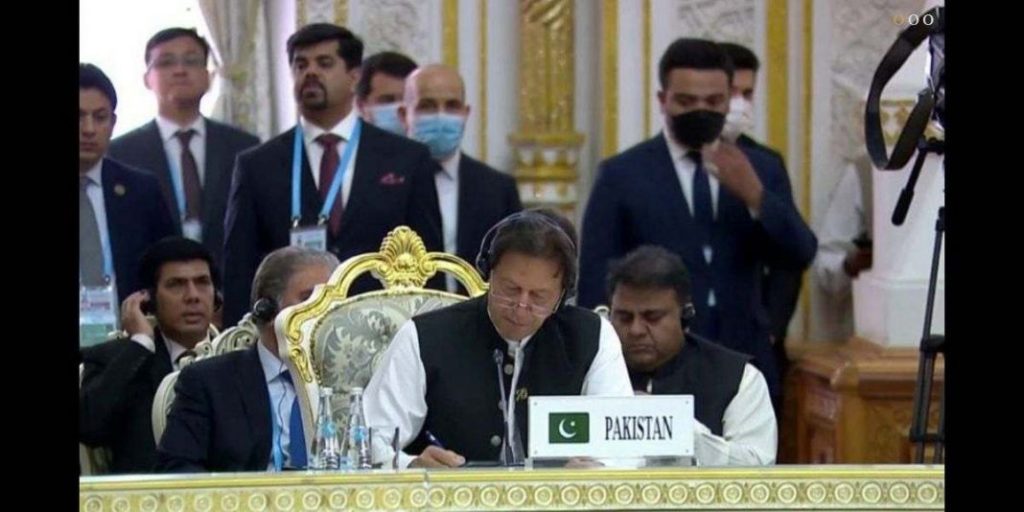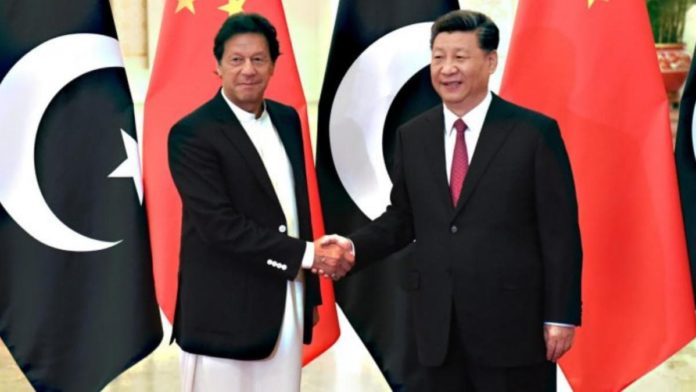The China-Pakistan Economic Corridor (CPEC) is progressing at full speed regardless of whatever is happening within Pakistan’s politics or around the region. Initially there were many hurdles, some were intentionally created in order to detract this great project from its original worth, but it is highly commendable that the ruling establishment of both China and Pakistan are passionately committed to finish the project within the prescribed time frame. In the present situation now, when the region is predominantly moving towards a strategic paradigm shift in terms of foreign policy, economics and power politics, CPEC offers a great opportunity for the regional and remote players to come and join this multi Billion-dollar project for better connectivity and trade.
Having said that, however, many problems still exist in the region that are serious challenge to the said opportunities and hence to possible prosperity. These challenges include the unstable situation in Afghanistan and the Indian role to sabotage the CPEC by supporting terrorist proxies.
Afghanistan Situation
For Afghanistan, in terms of trade, CPEC offers a huge economic opportunity. But the Afghan unity government’s stance is totally in favor of India, regardless what price to be paid and it is absolutely clear in recent years that Kabul is not free to decide whether to join CPEC openly or not. The forces that are trying to sabotage CPEC are always sitting in Afghanistan. Also, the on-going situation in Afghanistan and associated ground realities dictate to look into deeper insights for better understanding and elaboration. Afghanistan is currently in a war-like situation and Kabul regime’s writ is very limited even in the presence of NATO forces. Around more than half of Afghanistan is under Taliban control and they have enforced passage tax throughout their controlled dominion. Afghanistan’s national army lacks in many areas including training, compensation, loyalty and above all, commitment. The border dispute between Afghanistan and Pakistan has intentionally been kept alive by adversary faction. The presence of ISIS/ Daesh in eastern part of Afghanistan points towards possible future adversary intentions. India has been playing a nasty game in Pakistan’s back yard and the Afghan regime is totally playing into Indian hands.
Afghanistan, intentionally or non-intentionally, does not understand sensitivities between India and Pakistan rather stressing that Afghanistan is free to choose when it comes to foreign relations thus totally ignoring the fact that India is using Afghan soil against Pakistan. Indian role in Afghanistan is quite disturbing for Pakistan’s interests. It is known fact from various resources that India is supporting TTP terror network with help from the notorious Afghan NDS agency. A couple of examples here to elaborate the fact with proof that former US defense secretary Chuck Hagel openly mentioned the Indian role in destabilizing Pakistan while using Afghan soil. Also, during recent visit to India the current defense secretary James Mattis intended to convey to Indians, especially RAW about moderating their policy for helping TTP terrorists which of course disturbed Indians. It seems conclusive that Indian RAW has invested a lot of financial, human and logistic resources in order to destabilize Pakistan and now CPEC using Afghan soil and Afghan resources thus it is not easy for them to withdraw or moderate their network of activities. This is a crude challenge and needs to be handled in a straight surgical plus sharp diplomatic way. Bottom line is that Afghanistan is not in a position currently to reap benefits from CPEC unless a serious and sincere effort could be done in order to bring peace and stability in this war-torn country. The ongoing negotiations with Taliban on the request from US President Donald Trump and with Pakistan’s mediation have great hopes that finally some stability could be restored in Afghanistan after 4 decades of terrible history.
The Indian Dilemma
India has openly opposed CPEC since day one and is persistently on course trying to sabotage it one way or another. A live example is the capture of serving Indian naval officer Commander Kulbhoshan Yadav who openly admitted that he was assigned to destabilize Pakistan, especially CPEC and that he used Afghan and Iranian soil to support separatist groups in Pakistan, like BLA, etc. With these examples there should be no doubt that the Indians are trying best to destabilize Pakistan with help from Afghan government, NDS, some other notorious agencies and few near and distant countries.

India actually can benefit from the CPEC project and the huge potential associated with it but the hawks in the Indian establishment are not ready to talk on resolving issues with Pakistan. This is the real Indian Dilemma and in near or distant future, there seems to be no hope that Indian will be wisely choosing their chances to be the part of OBOR project. The world is realizing Pakistan’s importance especially after winning the war on terror by the Pakistan army and initialization of the CPEC project in 2015. Many countries of the world have shown interest in the CPEC project due to its worth and economic viability. India, however, is not playing on the right side of the game.
There is no serious attempt from Indian intellectuals, media dons and even in civil society in regard to CPEC related economic viability and connectivity benefits. The current Modi regime is on the course of political, diplomatic and military confrontation with Pakistan at all levels. In order to counter CPEC project, the Modi regime came up with its alternate Chahbahar project with Iran thus trying to undermine OBOR. But here, India has a big reason to feel worried that its Ratnagiri Chabahar Refinery project, which has been described as the “world’s largest refinery-cum-petrochemical project” is spluttering due to agitation by farmers against land acquisition. This project is itself facing problems. The bigger reason of India’s worry is the investment that Saudi Arabia is going to make in Gwadar Port under CPEC. With this Saudi investment, Gwadar for sure will take precedence over Ratnagiri. India views this Saudi investment as a game changer for Gwadar.
As said, it is obvious that world is realizing OBOR importance for trade and connectivity, both China and Pakistan must keep a close eye on developments in Afghanistan and watch RAW-NDS nexus. It might also be worth using gun boat policy with the Indians keeping in mind that peace in Afghanistan is not in India’s interest (from historical and strategic perspective).

Saudi Arabian Involvement in CPEC
The visit by Saudi Arabia’s Energy Minister Khalid A Al-Falih to Gwadar for the inspection of the site allocated for a multibillion oil refinery in the port city revealed that Saudi Arabia and Pakistan are giving the final touches to reaching an agreement for a Saudi Aramco Oil Refinery in Pakistan worth $10 billion.
Undoubtedly, this is a major development in the region at the present. The Saudi-Pakistan relationship, which has been traditionally close and warm, is moving on to a new level of partnership. The Saudi investment decision can be taken as signifying a vote of confidence in the Pakistani economy as well as in the leadership. It comes on top of the $6 billion package that Saudi Arabia had pledged last year to help Pakistan tide over the current economic difficulties.
The visiting Saudi minister Khalid al-Falih told reporters in Gwadar that Saudi Arabia wants to make Pakistan’s economic development stable through establishing an oil refinery and partnership with Pakistan in the China Pakistan Economic Corridor. This remark highlights that Saudi Arabia is openly linking up with the China-Pakistan Economic Corridor (CPEC). China has welcomed this development. The agreement on the Gwadar project is expected to be signed at the time of Saudi crown prince Mohammad Bin Salman’s official visit in February.
Saudi Arabia is trying to diversify its external relations and responding to strategic paradigm shift after the Jammal Khashoggi incidence, by pivoting to Asia (China and Pakistan). Sufficient to say, under the circumstances, a China-Pakistan-Saudi axis has the potential to expand. The common benefits are trade, connectivity and geo politics. Most likely UAE will also follow suit investing in CPEC after observing Saudi strategic move at Gwadar. The recent visit of UAE crown prince Sheikh Mohammad Bin Zaid Al- Nahyan to Pakistan was of course a significant signal in this regard.

Iran’s Possible Bet
Being a traditionally rival to Saudi Arabia, Iran for sure is watching the surge in Saudi-Pakistani alliance deeply and carefully specifically to CPEC and Gwadar port. The Saudi presence in Pakistan’s border region with Iran (at Gwadar port) has security implications from an Iranian standpoint. Having said that, Iran still has lot to bet in the shifting paradigm associated with China-Pakistan economic corridor. Historically, the trade between Pakistan and Iran peaked to US$1.32 billion in 2008-2009 but subsequently declined and was recently around US $265 million. There is huge potential for the trade increase and both countries agreed to set up border crossings for trade.
Pakistan has identified five places for setting up trading centers along the Pak-Iran border, and the purpose of these common border markets is to sell goods at a concessional rate of customs duty and other taxes in order to control the growing cross border illegal trade. The biggest area where Iran has lot of room to play is the Pakistan Iran gas pipeline and upgradations of RCD highway with stretch up to Turkey and Caucasus (Turkey Iran Pakistan Economic Corridor – TIPEC).
The Iran-Pakistan Gas Pipeline project or IP Gas Pipeline Project is under-construction 2,775-kilometre pipeline to deliver natural gas from Iran to Pakistan and must be completed at any cost. This is a key and critical project for establishing strategic relations and enhancing economic cooperation between the two countries. It would ensure the supply of 750 million cubic feet of natural gas per day to Pakistan which is required to keep industrial and commercial wheel into perpetual motion. Even though Iran has to be dealt carefully due to imposed UN sanctions, Pakistan has to manage one way or another for execution of this project.
It is expected that gas delivered from Iran through the pipeline will cost US$11 per million British thermal unit (MMBTU) compared to $13 per MMBTU which is expected to be price of gas delivered through the proposed Trans-Afghanistan Pipeline and $18 per MMBTU of imported LNG. The pipeline’s section in Iran was built by the National Iranian Gas Company. In Pakistan, a consortium of Sui Northern Gas Pipeline Limited and Sui Southern Gas Company Limited is responsible for the construction of the pipeline.
The contract for engineering, procurement, construction and financing of the Pakistan’s section was signed with Iran’s Tadbir Energy. Iran agreed to provide a $500 million loan for construction payable in 20 years. However, on 13-December-2013, Pakistan’s Minister for Petroleum and Natural Resources Shahid Khaqan Abbasi (later Prime Minister) said that Iran is unable to fund the project citing ‘acute financial constraint’ as the reason. Pakistan authorities however are said to remain committed with the project. Both sides have decided to constitute a working group which would re-establish the new parameters for the projects, including a new time-frame and other important issues involving financing of pipeline to be laid down in the territory of Pakistan.
Moreover, upgradations of RCD highway for Eurasian connectivity is another area where Iran can play an important role. The upgraded RCD can be converted to Turkey Iran Pakistan Economic Corridor with possibility to be connected further to CPEC and Gwadar. Efforts must be made to make it a viable project linking Pakistan, Iran, Turkey, and Azerbaijan into the Caucasus and further Central Asia and Eurasia for connectivity reasons. This way, all these countries that are already under the ECO umbrella will come even closer and huge potential can be explored via re-investment on this RCD highway OR Turkey Iran Pakistan economic corridor (TIPEC) having unique connections with many seas, Persian Arabian Gulf/ Arabian Sea, pivotal Caspian & Black Sea. This is food of thought for all country’s policy makers, especially Iran. This possible corridor (TIPEC) having connection with CPEC will be the powerful economic and strategic maneuver between these countries. If Iran pursues the above mentioned two strategic points, it still can have lot to offer.

SCO and CPEC Potential
Pakistan is currently in the phase of strategic policy paradigm shift about ongoing war against terrorism in Afghanistan. For the first time in the country’s history, Pakistan is stepping away from the traditional US bloc and getting close to China and Russia. The membership of SCO bloc is a clear example. In addition, Pakistan’s role is pivotal for Chinese led OBOR vision due to flagship CPEC project under OBOR and SCO member countries largely in favor of this economic corridor (CPEC). Through CPEC, all central Asian land locked counties will have access to the Arabian Sea for developing trade and commerce. There is much hope from SCO member countries for collaboration and participation in CPEC for achieving regional connectivity goal. If this happens, enormous economic activities will be kicked off that might turn the tide around and Asia will emerge as the next center of focus in trade and foreign policy terms. CPEC being a flagship project, will become a bonanza for the regional SCO member countries and for all over the world.





